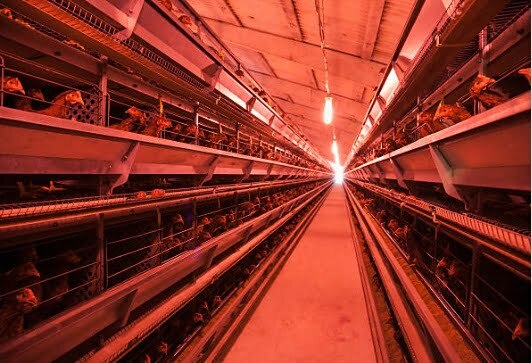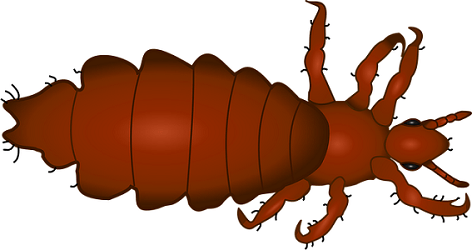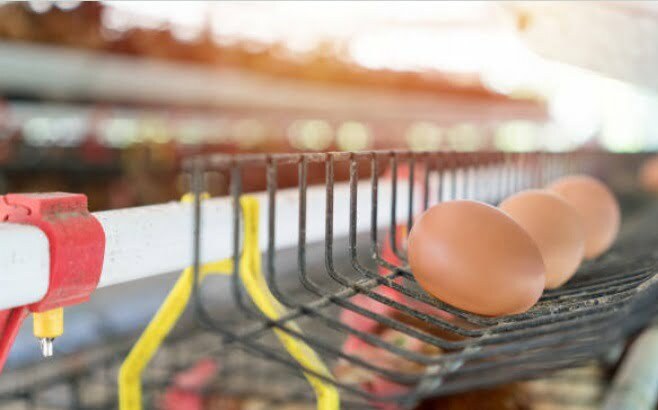Lights for laying hens are very important. However, this is considered a less urgent matter. At first, I thought that giving the light for chickens was only to make it easier to look around. But, it turns out the benefits can be more than that.
But, it turns out the benefits can be more than that. Many studies have shown that the function of the lamp is not limited to just providing lighting.
Apparently, giving light for chickens can affect the process of maturity of the reproductive organs of laying hens. Yes, although the process is not direct. The effect is very important, so we have to look at this one review
Function of light for laying hens
Light coming from the lamp can affect the maturity of the reproductive organs of laying hens. Here is more focus on egg production.
And we’re not talking about feed. I assume that the feed is given in a standard quantity and quality. Because To be able to produce an egg, except feed, there are two important hormones needed.
These hormones are FSH (follicle stimulating hormone) and LH (luteinizing hormone). Both of these hormones are secreted by the pituitary gland. And the pituitary must be stimulated by the hypothalamus.
The hypothalamus will stimulate the pituitary because it gets light stimulation. This light can be from sunlight or lamps.
So, the process is that light is received by the hypothalamus, then transmitted to the pituitary. And the pituitary produces FSH and LH.
FSH works to mature the egg cells in the ovaries. While LH to hasten the egg, so that it immediately goes to the fallopian tube.
The presence of light for chickens not only stimulates the hypothalamus, but also other glands to produce hormones needed by chickens.
For example, the parathyroid glands. This gland will produce parathyroid hormone. Its function is to regulate levels of calcium and phosphorus minerals in the blood. This will affect the thickness of the egg shell later.
How much light do chickens need to lay eggs
The light needs of laying hens are different in each growth phase. The period of starter, grower and layer, the function of light plays a different role. The following is a lighting guide for laying hens.
| Phase layer growth | Time to light | Light Intensity |
| Starter ( 0 – 6 ) weeks | 21 – 24 hours | 20 – 40 Lux |
| Grower ( 7 – 18 ) weeks | 12 hours | 5 – 10 lux |
| Layer >19 weeks | 16 hours | 10 – 20 lux |
Addition of light is given gradually. The stages are as follows.
- The addition of the length of lighting must be done immediately when the chickens lay eggs for the first time.
- The next addition of lighting is done in stages, increasing by 30 minutes each week starting from the time the chickens lay their eggs for the first time, until it reaches 16 hours.
- Do not reduce the length of lighting when chickens are producing eggs, especially during a critical period (from the beginning of production to peak production), which is 18-28 weeks of age.
How to Count How Much Lamp/Lights for laying hens
For layers, the required intensity is 10 – 20 lux. To get that intensity, how many lights are needed?
To determine the number of lights, it can be calculated using the formula below.
Lamps = ( intensity (lux) x Area hens cage (m2)) : ( Lumen x 0.65 x 0.9 )
Giving lights for laying hens is one of way to increase egg production.
Light can increase production efficiency. The effect will be very visible if the population is very large. there is a research concerned with this.
as many as 14400 laying hens were tested by giving different lights. the details are as follows:
- The laying hens used were ISA Brown. The total number is 57600 chickens. Then divided into 4 cages. Each cage has a population of 14,400 laying hens.
- The cage used is a battery cage. One set is filled with 20 laying hens or per chicken gets a cage area of 750 cm2.
- The laying hens studied were from 22 weeks to 75 weeks of age. In other words, the study was conducted for 53 weeks or more than a year.
- The intensity of light received by the chickens is as much as 10 lux with a lighting duration of 15 hours per day. The lamp is installed above the dining area.
The results of his research can be seen in the table below.
| LED Light Colour | Red | Yellow | Green | Blue |
| Daily egg production (%) | 87.01 | 86.75 | 83.9 | 84.77 |
| egg weight (grams) | 58.89 | 58.89 | 58.97 | 58.85 |
From the results above, the highest average daily production is in the red LED lights. Then yellow and after that green and blue.
The difference in daily egg production between yellow and red lights is only 0.26%. That means, from 14,400 chickens, there is a difference in egg production as much as
0.26% x 14,400 = 37.44 eggs per day.
So, what do you think?
Please share if you like. Thank you.
 JOYNIM FARM Goat Farming, Cattle Farm, Laying Hens, Quail Farm, Gardening
JOYNIM FARM Goat Farming, Cattle Farm, Laying Hens, Quail Farm, Gardening



